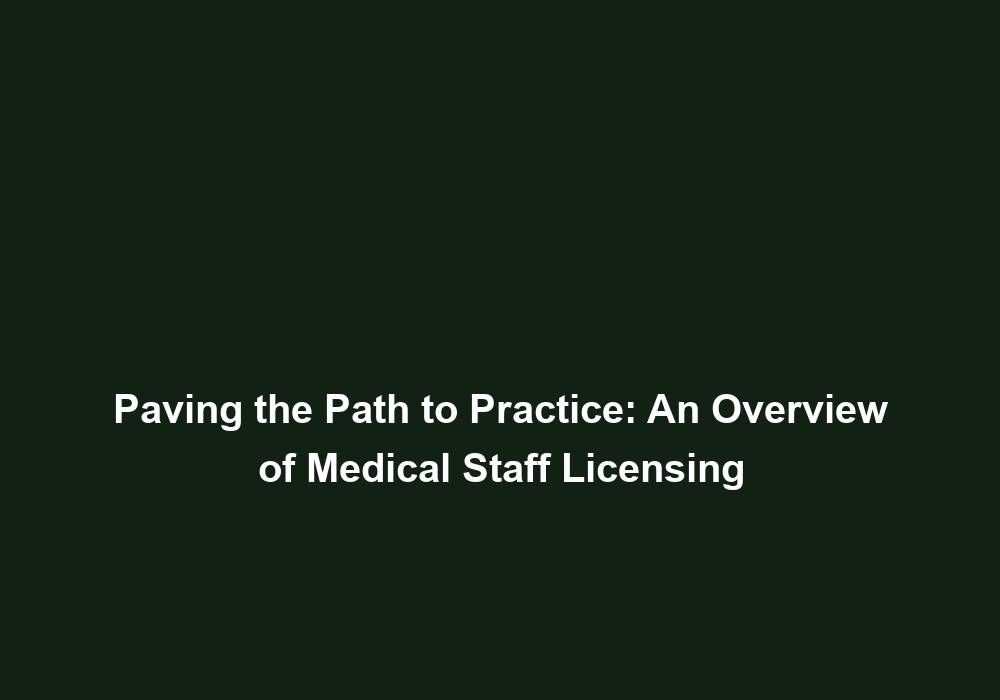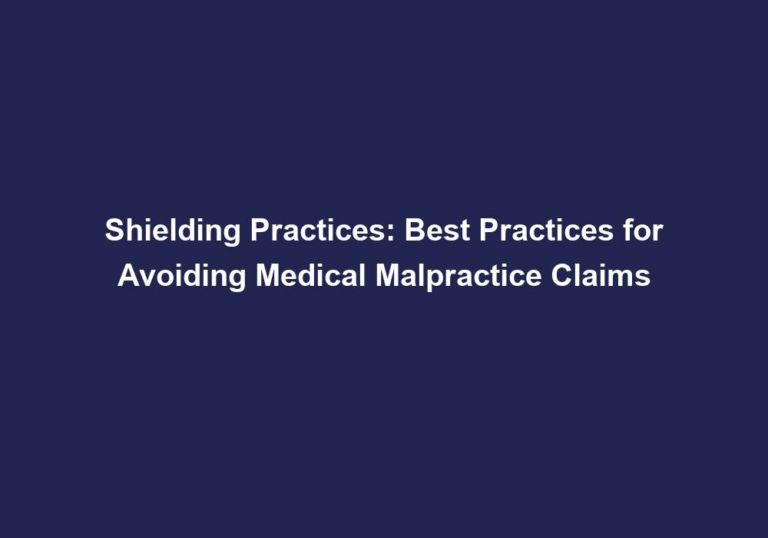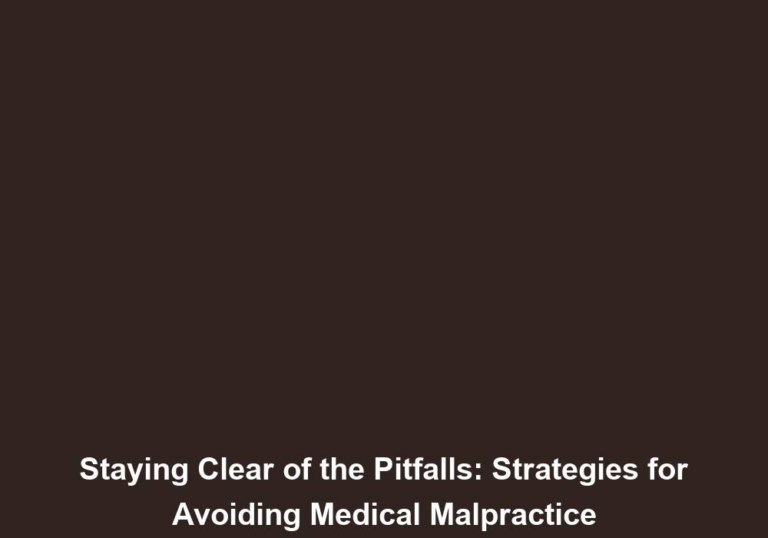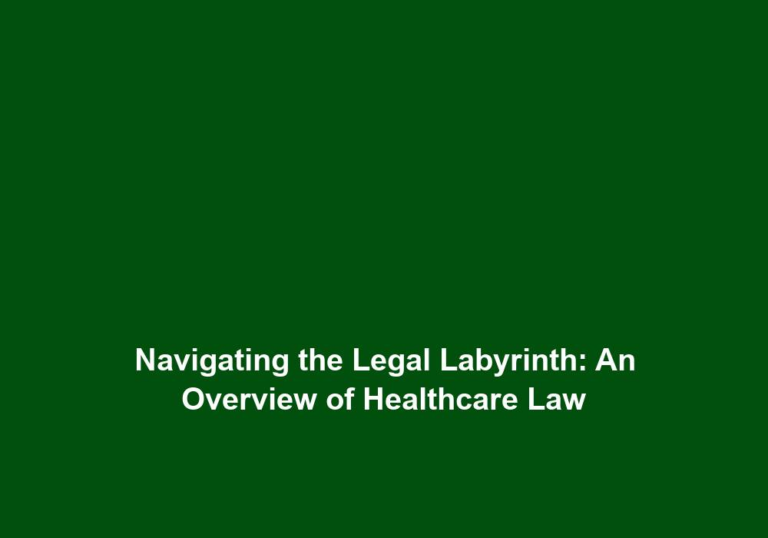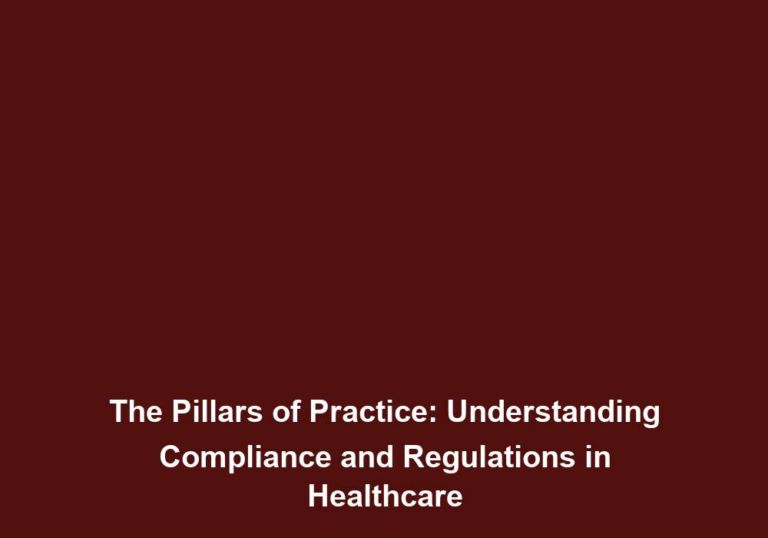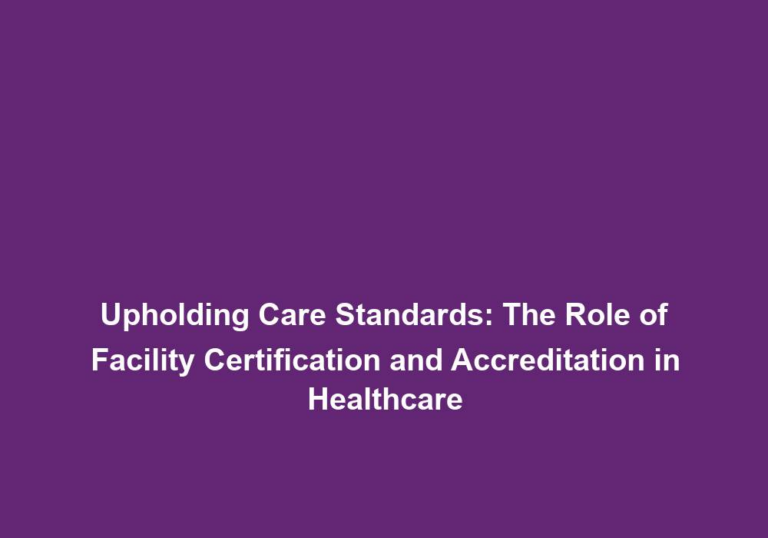From Training to Practice: Navigating the Licensing and Certification Landscape
In today’s professional world, acquiring the necessary licenses and certifications is often a crucial step towards establishing a successful career. Whether you are entering a new field or looking to advance within your current industry, understanding the licensing and certification landscape is essential. This comprehensive guide will provide you with all the information you need to navigate this process seamlessly.
What are Licenses and Certifications?
Before diving into the intricacies of licensing and certification, it is important to understand what these terms actually mean. Licenses and certifications are official credentials that validate an individual’s skills, knowledge, and competency in a particular field or profession.
Licenses are typically issued by governmental or regulatory bodies, ensuring that professionals meet specific legal requirements to practice in a given occupation. These licenses may be mandatory for certain professions, such as doctors, lawyers, or pilots, where public safety and well-being are at stake.
Certifications, on the other hand, are voluntary credentials awarded by professional organizations or associations. They demonstrate an individual’s proficiency in a specialized area within a profession and can enhance credibility and marketability. Certifications are common in fields like project management, human resources, and information technology, among others.
Why Pursue Licenses and Certifications?
Obtaining licenses and certifications offers several advantages for professionals:
-
Enhanced Credibility and Marketability: Having the appropriate licenses and certifications showcases your commitment to your profession and signifies that you possess the necessary skills and expertise. This can significantly boost your credibility and open up new opportunities for career growth.
-
Increased Job Prospects: Many employers prioritize candidates with relevant licenses and certifications, as they provide proof of competence and dedication. Holding these credentials can give you a competitive edge over other candidates when applying for jobs or seeking promotions.
-
Continued Professional Development: Acquiring licenses and certifications often involves completing specific training programs or continuing education courses. This ongoing learning helps you stay updated with the latest industry trends, best practices, and advancements within your field. It demonstrates your commitment to staying current and continuously improving your skills.
-
Networking Opportunities: Pursuing licenses and certifications allows you to connect with other professionals in your industry. These networks can provide valuable support, mentorship, and collaboration opportunities, enhancing your professional growth. You can attend industry conferences, join professional associations, and participate in online forums or communities to expand your network.
Navigating the Licensing and Certification Process
Now that you understand the significance of licenses and certifications, let’s explore the steps involved in obtaining them:
1. Research and Identify Requirements
To begin the licensing and certification process, you need to research and identify the specific requirements for your desired profession. This includes understanding the regulatory bodies or professional organizations responsible for issuing the credentials. Take note of the eligibility criteria, prerequisites, and any necessary exams or assessments.
It is important to thoroughly research and understand the requirements as they can vary depending on the profession and jurisdiction. Some licenses may require a specific educational background, while others may require a certain number of years of experience. By knowing the requirements upfront, you can plan your path to obtain the necessary credentials.
2. Determine Training and Education Needs
Once you have identified the required licenses and certifications, evaluate your existing knowledge and skills to determine if additional training, education, or experience is necessary. This step is crucial to ensure that you meet the eligibility criteria.
Some certifications may require specific courses, workshops, or a minimum number of years of professional experience. It is essential to identify any gaps in your knowledge or skills and make a plan to address them. This may involve enrolling in additional training programs, pursuing further education, or gaining practical experience through internships or apprenticeships.
3. Enroll in Accredited Programs
If additional training or education is required to fulfill the licensing or certification requirements, it is important to enroll in accredited programs that meet the standards set by the regulatory bodies or professional organizations. These programs may be offered by universities, colleges, vocational schools, or online platforms.
When choosing a program, ensure that it is reputable and recognized within your industry. Consider factors such as the quality of instruction, curriculum relevance, and the program’s track record in helping students successfully obtain their licenses or certifications.
4. Prepare for Examinations or Assessments
Many licenses and certifications involve a formal examination or assessment process. To increase your chances of success, it is crucial to familiarize yourself with the exam format, content, and study materials.
Dedicate sufficient time to prepare and review the required topics. Create a study schedule and allocate time for practice exams or mock assessments. Consider joining study groups or utilizing online resources, such as practice questions or video tutorials, to enhance your preparation.
5. Take the Examinations
Once you feel adequately prepared, it is time to schedule and take the necessary examinations or assessments. Follow all instructions provided by the regulatory bodies or professional organizations regarding exam registration, location, and materials allowed during the test.
On the day of the exam, ensure that you are well-rested, confident, and prepared. Arrive at the test center early, bring all necessary materials, and adhere to any rules or guidelines provided. Stay focused and manage your time effectively during the exam to maximize your chances of success.
6. Obtain Licenses and Certifications
After successfully passing the exams, it is time to submit the required documentation to obtain your licenses or certificates. This may include providing exam scores and proof of completion of any necessary training or education.
Be sure to carefully review the application process and gather all required documents. Pay any associated fees and comply with any additional requirements, such as background checks or interviews. Once your application is approved, you will receive your licenses or certificates, officially recognizing your skills and expertise in the profession.
Conclusion
Navigating the licensing and certification landscape may seem daunting at first, but with proper guidance and understanding, it can be a rewarding endeavor. Obtaining licenses and certifications not only enhances your professional credibility and marketability but also opens doors to new opportunities for career growth.
By following the outlined steps, conducting thorough research, and investing in your professional development, you can navigate this process successfully and achieve your career aspirations. Remember to stay proactive, continuously seek opportunities for growth, and stay informed about any changes or updates in your field. With the right mindset and dedication, you can excel in your chosen profession and contribute to your industry’s advancement.

